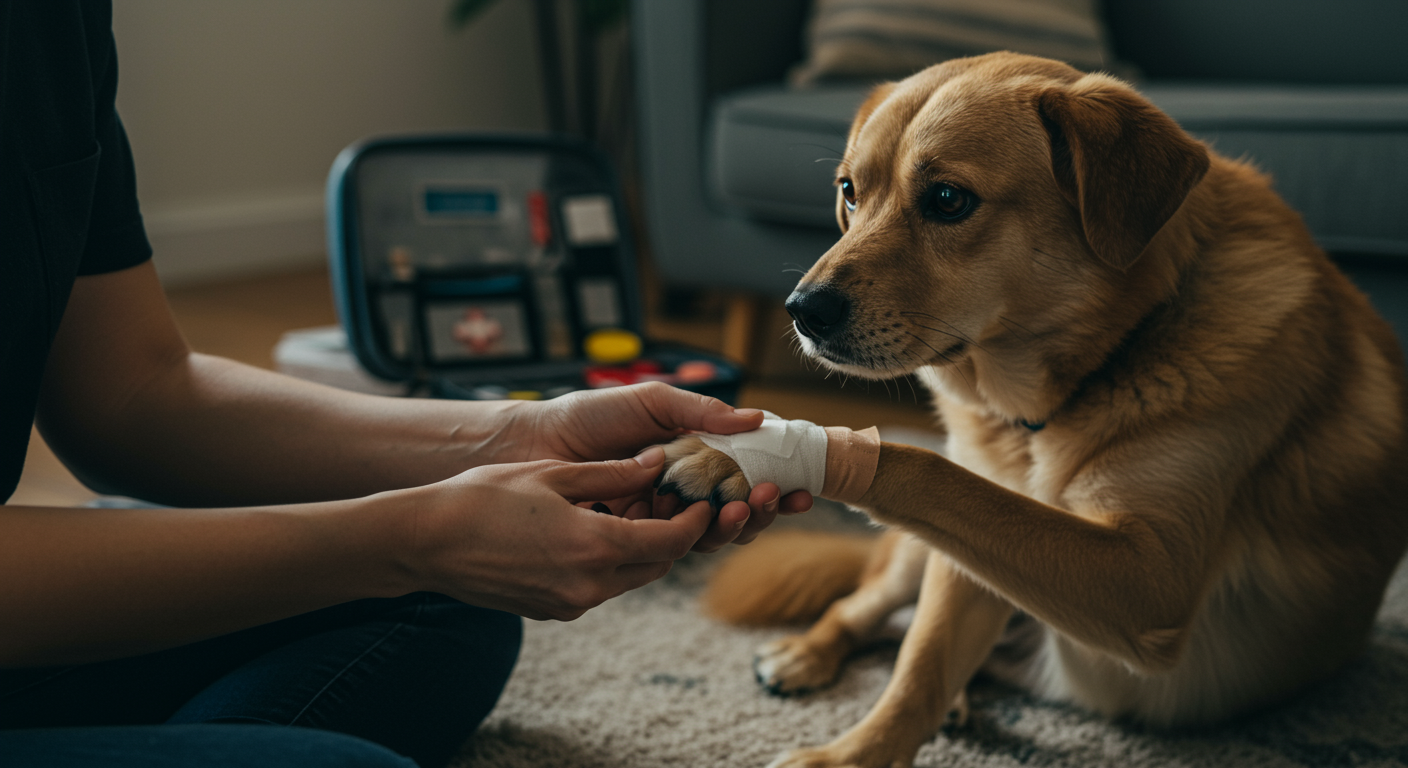Bringing a new pet home is a joyous occasion, but it's essential to be prepared for any situation, including medical emergencies. As a new pet owner, knowing basic first aid can make a significant difference in your pet's health and potentially save their life. This guide is designed to equip you with the knowledge and confidence to handle common pet emergencies.

Why Understanding Pet First Aid is Crucial for Your New Pet
Accidents and unexpected illnesses can happen to any pet at any time. Being prepared with basic pet first aid knowledge allows you to respond quickly and effectively until you can reach a veterinarian. This can minimize your pet's pain and discomfort, and in some cases, prevent a minor issue from becoming a life-threatening situation.
Essential First Steps for Pet Care
- Assemble a Pet First Aid Kit: Having a well-stocked kit is a must. Include items like:
- Gauze pads and tape
- Antiseptic wipes or solution
- Sterile saline solution
- Blunt-tipped scissors
- Tweezers
- A digital thermometer
- Pet-safe antiseptic ointment
- Emergency contact information (veterinarian, emergency clinic, poison control)
- Any medications your pet currently takes.
- A muzzle (if your pet might bite due to pain)
- A carrier for transport
- Learn Basic Vital Signs: Familiarize yourself with your pet's normal vital signs, including resting heart rate, respiratory rate, and normal body temperature. This will help you quickly identify if something is wrong.
- Know Common Emergency Signs: Watch out for difficulty breathing, excessive bleeding, pale gums, collapse, seizures, vomiting or diarrhea, and changes in behavior.
Common Challenges & How to Overcome Them
- Choking: If your pet is choking, carefully open their mouth and look for the obstruction. If you can see it, try to remove it with your fingers or tweezers. If you can't see it, perform the Heimlich maneuver (abdominal thrusts) by placing your hands on their abdomen and giving a quick thrust upwards. For small pets, hold them upside down. Get to a vet immediately.
- Bleeding: Apply direct pressure to the wound with a clean gauze pad. If the bleeding is severe, elevate the injured area above the heart. If the bleeding soaks through the gauze, do not remove it; add more layers on top and continue applying pressure. Seek veterinary attention immediately.
- Poisoning: If you suspect your pet has ingested poison, try to identify what they ate. Contact your veterinarian or the ASPCA Animal Poison Control Center (APCC) immediately. Do not induce vomiting unless instructed to do so by a vet, as some poisons can cause further harm.
- Minor Wounds: Clean minor wounds with mild soap and water or saline solution. Apply a pet-safe antiseptic ointment and cover with a bandage if necessary. Monitor for signs of infection (redness, swelling, pus).
Tips for Success
- Stay Calm: Your pet will sense your anxiety. Speak in a calm, reassuring voice.
- Act Quickly: Every second counts in an emergency. Don't hesitate to seek professional help.
- Practice: Consider taking a pet first aid and CPR course. This will give you hands-on experience and build your confidence.
- Regularly check your pet first aid kit: Make sure that all items are in date and replace used or expired products.
Building a Strong Bond with Your Pet
Knowing how to care for your pet in an emergency is a vital part of the bond you build. It's about showing them that you're always there, ready to protect and comfort them. By taking these steps, you'll be prepared to handle whatever comes your way.
Recommended Products for New Owners
- A pre-made Pet First Aid Kit is a great starting point, as it contains essential supplies.
- A reliable digital Pet Thermometer for monitoring your pet's temperature.
- Pet-safe antiseptic wipes for cleaning wounds.
- A muzzle or cat carrier to keep you and your pet safe in stressful situations.
Quick Troubleshooting Guide
- Breathing Difficulties: Check for obstructions, and seek immediate veterinary attention.
- Unconsciousness: Check for breathing and heartbeat. Start CPR if necessary, and get to a vet immediately.
- Seizures: Clear the area around your pet to prevent injury. Time the seizure. Contact your vet.
- Vomiting or Diarrhea: Assess if mild, but contact a vet if severe or prolonged.
Next Steps in Your Pet Parenthood Journey
Continue learning about pet health and safety. Taking a pet first aid course can provide invaluable hands-on experience and boost your confidence. Your vet is also an excellent resource for any concerns you may have.